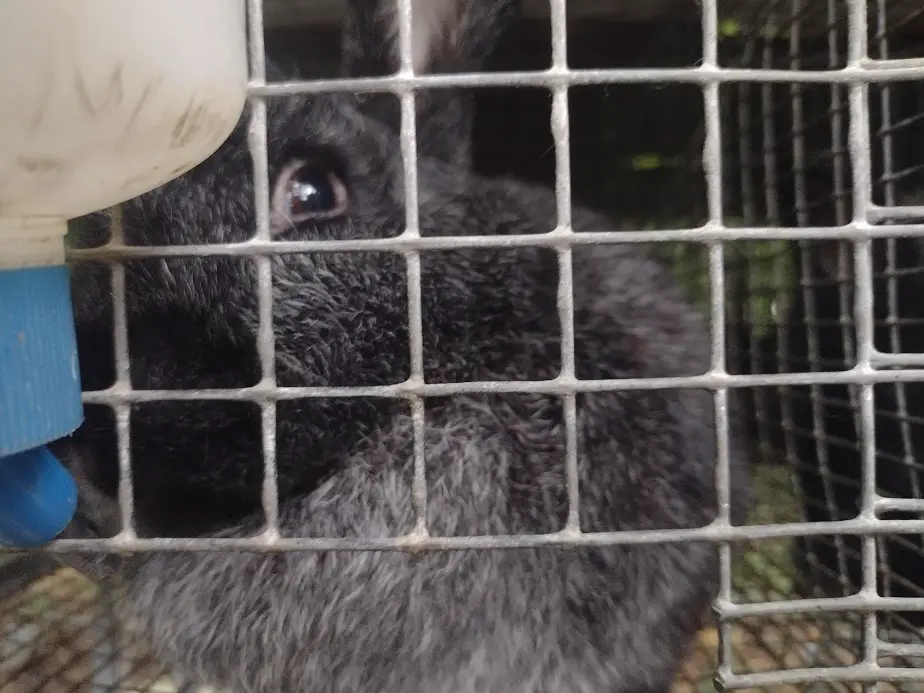Rabbits often cost between $15 and $30 a month to feed. You can learn to cut costs, or you could do it basically for free.
Feed Off-Brand Pellets
Cheap rabbit pellets are sufficient for the growth and health of all breeds of rabbits and can be significantly cheaper than high-end rabbit feed. A cheaper-off brand such as Producer’s Pride will not make your rabbits sick nor thin, and they will get all the nutrition and minerals they need.
If you’re growing rabbits for meat, for sale as pets, or just to keep your own family pets, a cheap pellet will do well for you and ninety-nine percent of the time it will be all you need for good growth and health. I’ve actually never bought a name-brand pellet.
I used to get Producer’s Pride, the in-house brand from Tractor Supply Co. We don’t shop there anymore, so now I get a local brand called Country Spirits, which is about of equal cost and feed value. Although, I don’t buy a lot of pellets these days.
The more expensive feeds may have more vitamins and more expensive additives like sunflower oil. And they often replace cheap grains like corn with oats, peas, and sunflower seed. A cheap pellet works well enough and you can supplement the diet with other things to get a far superior feed than any pellet.
If you are feeding a low-quality pellet and it’s not providing enough nutrition, you will be able to see it clear as day within a few weeks. Just monitor the animals’ condition and check to see if the backbone sticks out more than it should.
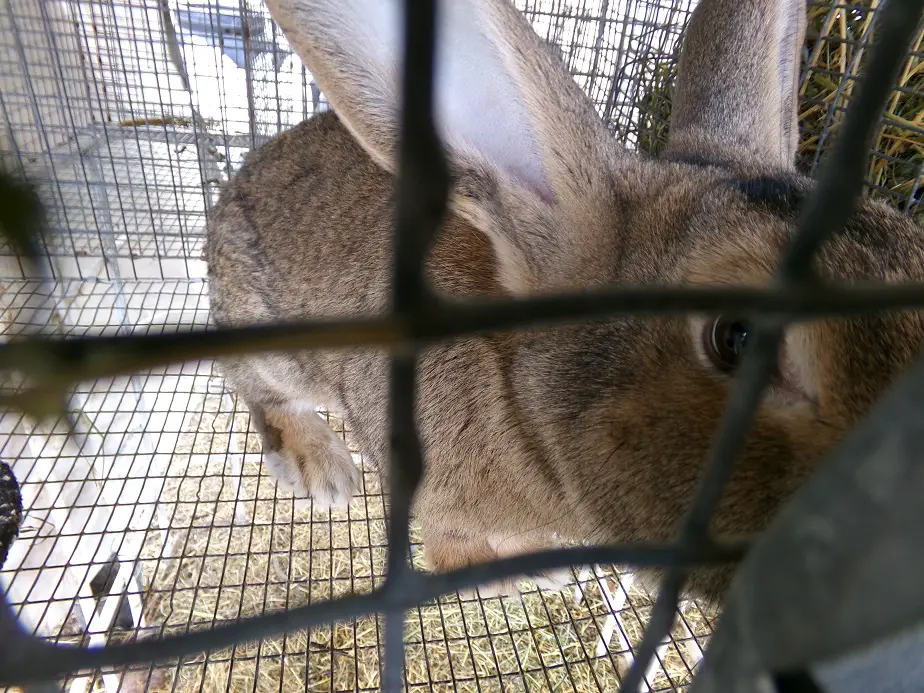
Don’t Free Feed
Free-feeding rabbits promotes overconsumption and wasted feed. Adult rabbits who are not growing or making babies should have their feed limited to two feedings daily. They only need as much as they’ll eat up in fifteen minutes. Free feeding is the most common mistake with rabbit owners.
Rabbits generally eat between 4 and 8 ounces of feed a day, depending on its nutritional value and the growth/size of the rabbit. Ours are currently getting 8-12 ounces daily for adults and 3-6 ounces daily for younger rabbits. We raise large breeds.
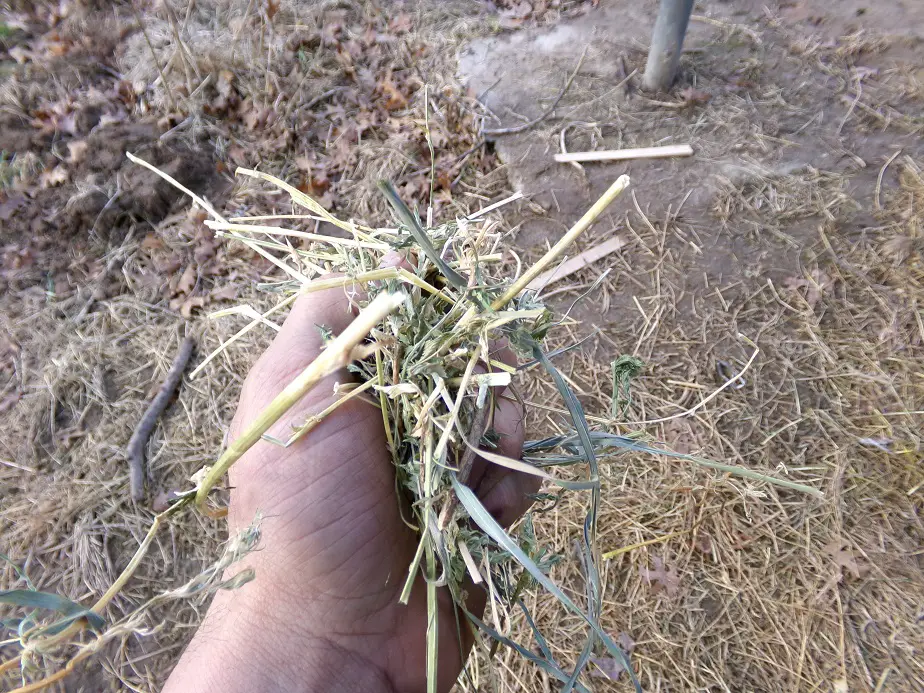
Feed Quality Hay Instead of Pellets
Hay costs about half as much per pound as cheap rabbit feed. If you can get quality hay and limit its waste, you can feed rabbits at half-cost. We feed a lot of hay in the winter when fresh greens are out of the question.
Not all hay is suitable for rabbits. Growing or nursing rabbits need a hay that’s higher in protein, 16 percent is ideal. That would be a clover of alfalfa hay. Grass hay alone is not often over 13 percent protein. That generally does not support growth, pregnancy, or nursing young.
I’ve raised a lot of rabbits on hay. It can be hard. Most rabbits can extract enough energy from hay alone and need supplemental grains and sometimes additional protein. That’s why rabbit pellets are usually about 80 percent hay, 10 percent corn, and 10 percent soybean.
Generally speaking, 20 percent of a rabbit’s diet should be some sort of grain. I have successfully raised litters of rabbits on just hay and fresh greens, but I’ve also had up to a 78 percent mortality rate with some litters in the last two years. Somehow, the rabbits I had worked with before did better than the ones I’m working with right now.
My goal is to raise 100 percent grass-fed rabbits for meat, but that’s going to take a lot of hard work on selective breeding and acquiring the right genetics. \
For more information, read this article: Feeding Rabbits Without Pellets

Reduce Spillage With a Catch Pan
Rabbits can be incredibly wasteful with their feed. Sometimes they decide to dig through their pellets or kick them around. If feeding hay, a significant portion of nutrition can be lost as the chaff falls off and into bedding material or through the cage floor. Rabbits usually won’t eat things that get dirty or stepped on.
With a more leafy hay like alfalfa or clover, you can lose up to 40 percent of the protein through chaff loss as the leaves crumble. A shallow bowl or small baking pan under the feed bowl or feeder will catch most of any loss and help you to keep the feed cost as low as possible.
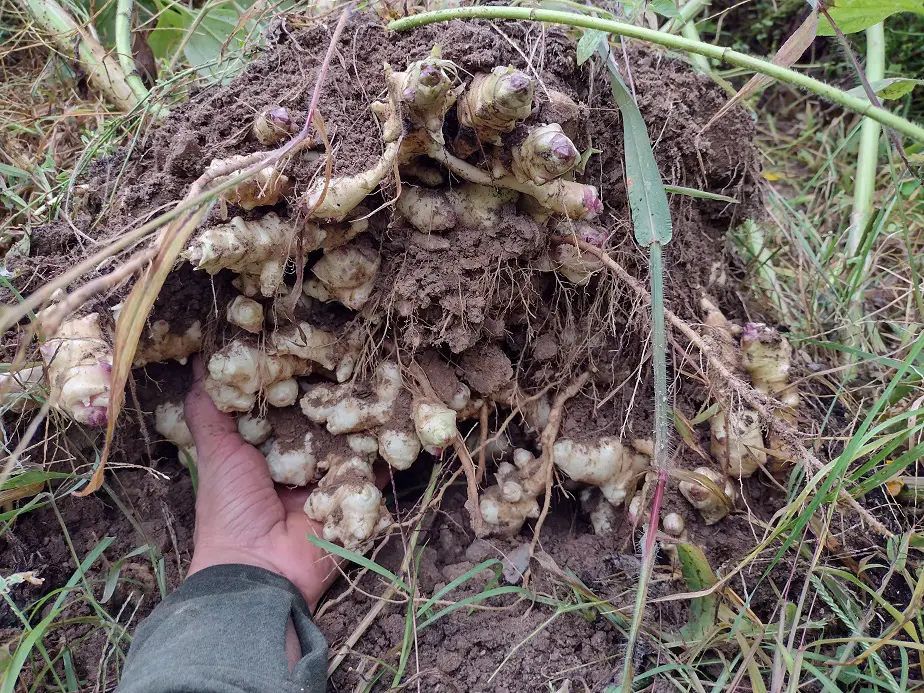
Digestion-Enhancing Feed Supplements
Jerusalem artichoke, White Mulberry leaf, and Biochar are three feed additives that enhance the feed digestion and nutrient absorption rate of mammals and poultry. Fresh greens of any type are also beneficial as a digestion-enhancing supplement.
Jerusalem artichoke helps to boost the beneficial microbes in the hindgut and to clear out the bad ones. This ends up improving the overall growth and feed efficiency of rabbits. Biochar improves gut flora and binds residues of agricultural chemicals in feed, improving overall feed usage. White Mulberry leaf adds several compounds which benefit digestion and it increases the protein content of rabbit feed.
There hasn’t been much published research on these additives, but common evidence points towards a notable function. In my experience, they are very beneficial
I personally use Jerusalem Artichoke and biochar, and am working on incorporating White Mulberry leaf in my supplements. I’m working on developing a supplement pellet and powder using these three ingredients that can be added to their daily feed. I hope to sell it in the future.
Learn more in this article: Best Feed for Meat Rabbits
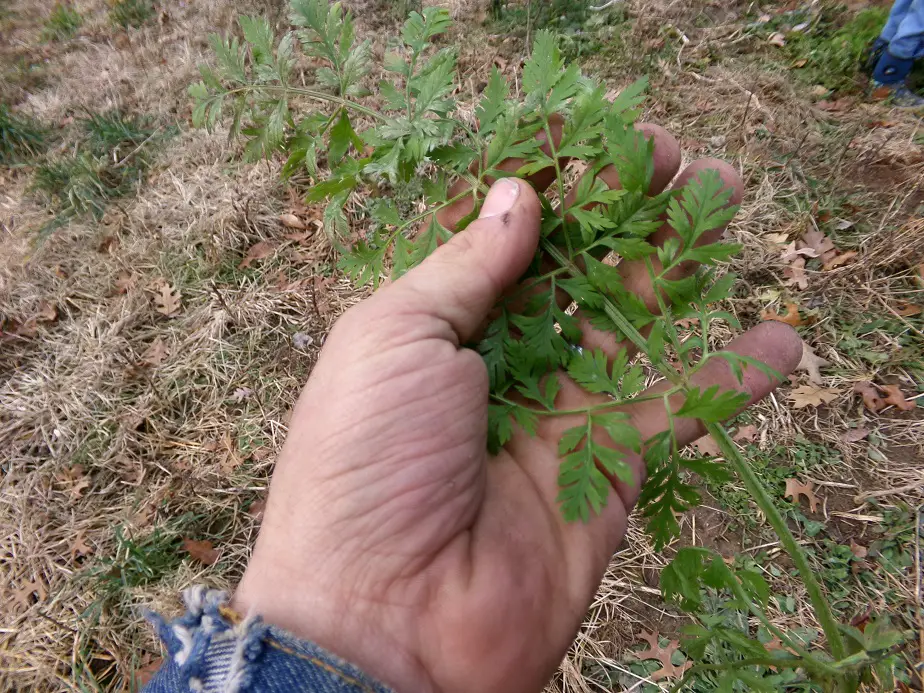
Collect Wild Plants
Wild grasses and other greens are highly digestible for rabbits and some are a fairly high-quality feed. Wild grasses may be low in energy, but are high in minerals and vitamins, and can be the bulk of a rabbit’s diet if properly supplemented. Both tall grass and fresh grass clippings can be fed to rabbits.
Grass has a protein content ranging from about 8 to 13. More tropical grasses are of lesser feed quality than more cool-climate grasses. Here in the Great White North, the grass we have is excellent fodder for rabbits, averaging near 13 percent protein. Still, they need more than just that.
I supplement our rabbit’s grass or hay with high-protein fodders and grains like corn and oats. Yes, I feed my rabbits corn. I know a common knowledge says don’t, but I do give them a bit to boost up the energy in their diet.
We actually don’t have a lot of grass on our 1-acre property. Most all of the land is used between gardens and pigs. Most of the grasses I cut come from down along the ditch and the shoulder of the road. We’ll go down there with a machete or grass whip and cut it long, haul it back in a wagon, and feed that wagon of grass for several days.
I feed a lot of dock, chickory, wild carrot, plantain, and lambsquarter that we gather along the edges of our property. Just about everything green is edible to rabbits, including tree leaves.
Here’s a related article: Can Rabbits Be Raised on Just Grass?
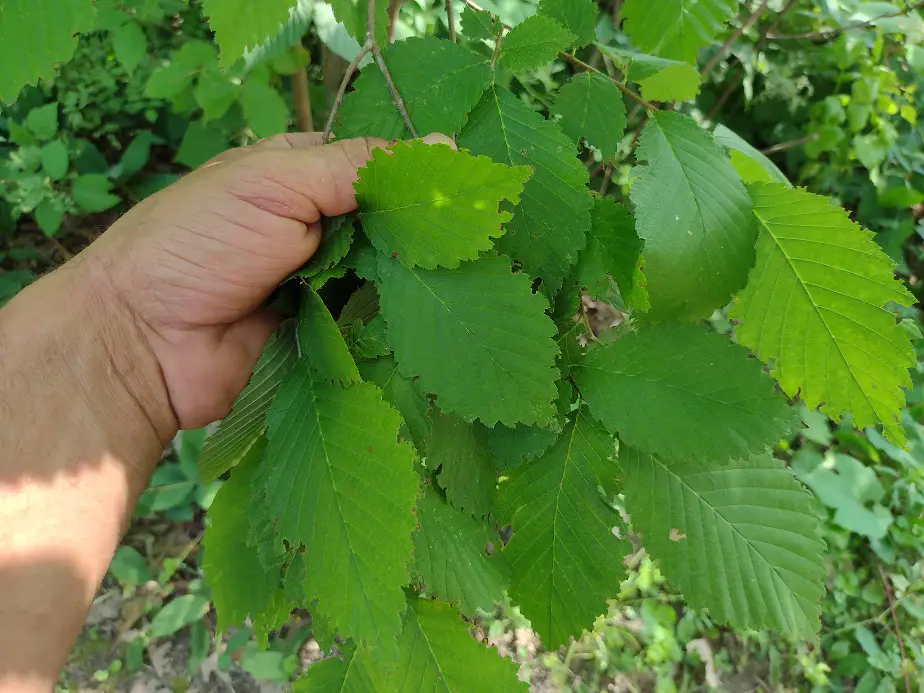
Tree Leaves
Tree hay, or tree fodder, is just leaves from trees that are safe for animals to eat. Tree leaves average much higher protein than grasses, and have a higher mineral content. Almost every tree and shrub in North America is safe for rabbit feed.
We usually feed about 25 percent tree leaves in the summer. I’m growing a lot more feed trees right now so we can increase that production. To my knowledge, there is no wild tree in North America that rabbits can’t eat leaves from. Here in Michigan, I’ll feed any wild leave.
My favorites are mulberry and aspen/poplar. White Mulberry is considered the best and has the highest protein content by far. It’s tough to just go out and get leaves off of tall trees. Usually, dedicated feed trees are coppiced are pollarded. That is, trimmed short and shrubby so you can strip the leaves easily.
I have about 1,000 yearling wild poplar trees growing. They’re 6 to 10 feet tall and I’m going to chop them to the ground next year so they grow as shrubs. Then we can easily gather all the quality feed we need. I planted them around the edges of the property and around my pig pen, all out-of-the-way places.
Here’s a guide to leaves for rabbit feed: Can Rabbits Eat Tree Leaves?
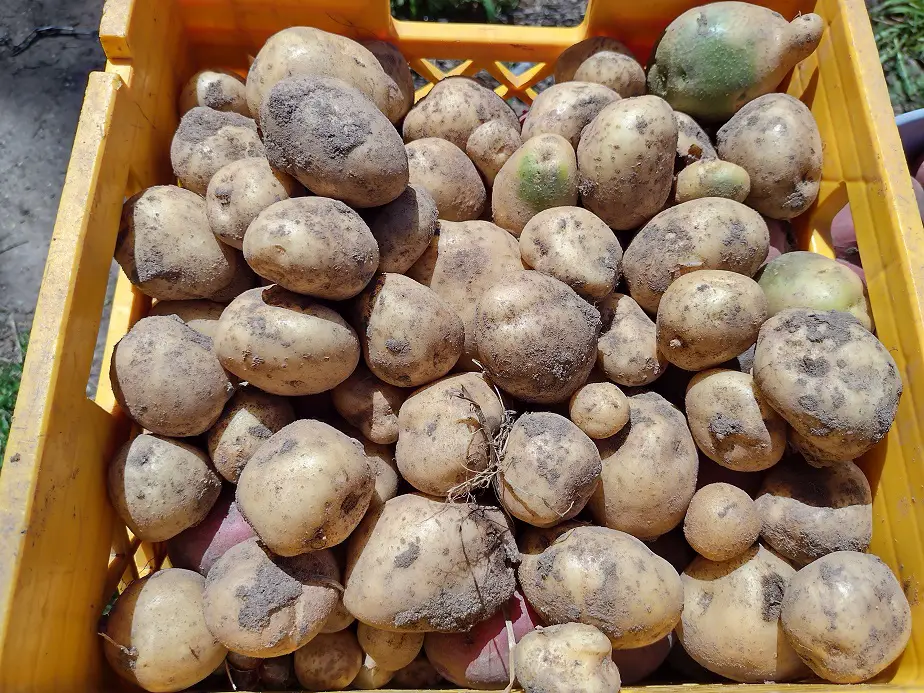
Vegetable Peels and Ends
Rabbits can eat the peels and nubs of vegetables and fruits from your kitchen. Most produce is good for rabbits. With the exception of alliums (garlic, onions, and such) and perhaps avocado peels, they can eat everything that you could have.
Save your apple cores, potato peels, and the little nubs from lettuce heads for your rabbits. I once came home from a scout camp with two crates full of left-over carrots and broccoli for my rabbits to eat.
I would limit the brassicas like broccoli and cabbage because they can cause gas issues in their gut. Those things are best as an treat. But everything else can be fed in higher quantities.
Related Articles:

